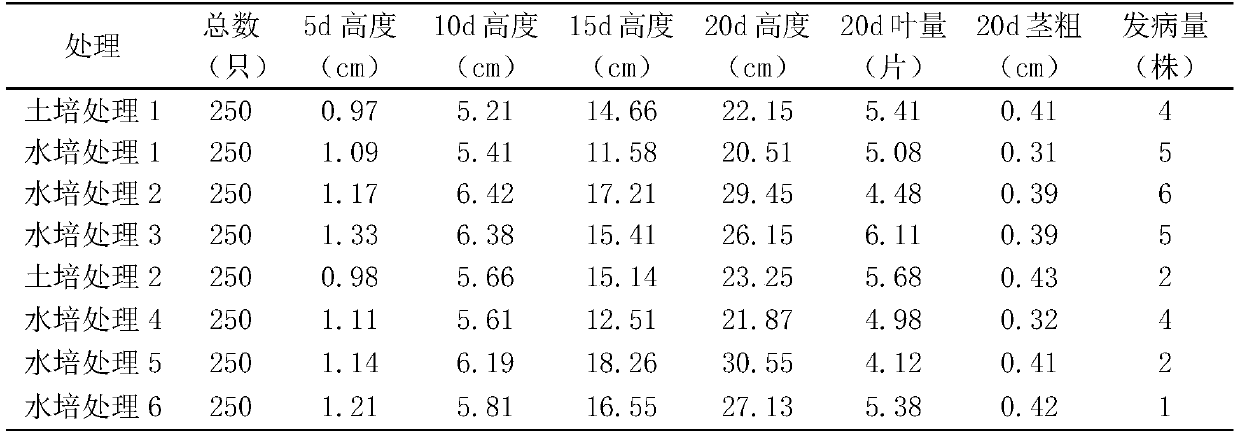Method for breeding insects by using hydroponic plants
A technology for hydroponic plants and insects, applied in the field of cultivating insects using hydroponic plants
- Summary
- Abstract
- Description
- Claims
- Application Information
AI Technical Summary
Problems solved by technology
Method used
Image
Examples
Embodiment Construction
[0019] The present invention is further illustrated below by means of examples, but the present invention is not limited thereto within the scope of the examples. For the experimental methods that do not specify specific conditions in the following examples, select according to conventional methods and conditions, or according to the product instructions.
[0020] In the following examples, unless otherwise specified, all reagents and materials used are commercially available.
[0021] In the present invention, the host plant is first cultivated with nutrient solution, and then inoculated with leaf-eating pests or juice-sucking pests that harm the host plant, and then inoculated with natural enemy insects of the current leaf-eating pests or juice-sucking pests, so as to breed a natural enemy insect corresponding to the host plant pest method.
[0022] Now take the broad bean seedling as the host plant, the bean aphid as the harmful insect, and the seven-star ladybug as the co...
PUM
 Login to View More
Login to View More Abstract
Description
Claims
Application Information
 Login to View More
Login to View More - R&D
- Intellectual Property
- Life Sciences
- Materials
- Tech Scout
- Unparalleled Data Quality
- Higher Quality Content
- 60% Fewer Hallucinations
Browse by: Latest US Patents, China's latest patents, Technical Efficacy Thesaurus, Application Domain, Technology Topic, Popular Technical Reports.
© 2025 PatSnap. All rights reserved.Legal|Privacy policy|Modern Slavery Act Transparency Statement|Sitemap|About US| Contact US: help@patsnap.com



